Some people think the black German shepherd is a result of a defect in the breed while others think the dogs are a cross breed. We’re here to tell you, those are myths. The black German shepherd is not a separate breed, it is a purebred that just happens to be solid black in color. They therefore have the same general temperament as German shepherds.
The black color is recognized within the breed standard of the German shepherd dog.
Originating in Germany, the German shepherd dog was a result of many herding dogs being selectively bred to produce the perfect working dog. The German shepherd has lived up to its purpose; boasting years of service in the military, police and other support services. On returning from the first world war, soldiers spoke of its valor.
In this article we will consider the traits and temperament of the black German shepherd, their history and how to care for them on a day to day basis so you can decide if they are the perfect dog for you.
TABLE OF CONTENTS
Black German Shepherd Overview and Price
They are loved for their protective and loyal nature. They are intelligent and trainable and are the most widely used breed in the police, military, and in search and rescue efforts.
A black German shepherd is as a result of breeding two black German shepherd dogs, or it is possible for a black and tan German shepherd to give birth to a black puppy. The difference is that black German shepherds are black from the moment they are born.
The German shepherd is a recognized breed by the American Kennel Club and the black color is recognized in their breed standard.
Because black German shepherds are rarer than the standard colors of German shepherds so they are more expensive. For a standard German shepherd you can expect to pay anywhere between $300-$700 for a puppy. For the black German shepherd, you can spend anywhere from $700-$2000 per puppy. Litters range in size anywhere between four and nine puppies.
| Breed Type | Herding |
| Purpose | Working and Companion |
| Size | Males are between 24 and 26 inches whereas Females are between 22 and 24 inches |
| Weight | Males between 65-90 pounds and Females between 50-75 pounds |
| Lifespan | 9-13 years |
| Color Variations | Black |
| Temperament | Active, Loyal, Stable, Courageous, Obedient, Trainable and Intelligent |
| Daily Exercise | Very High – 60 minutes, or more, each day |
| Activity Level | High due to their high intelligence and exercise requirements |
| Daily Food Consumption | Large breeds tend to use 20 calories per pound of body weight per day. So a typical male will consume between 1,300 to 1,800 calories each day |
| Known Health Issues | Hip Dysplasia, Spinal Cord Disease (i.e. CDRM), Osteoarthritis and Back Stiffness (i.e. Cauda Equina Syndrome) |
Black German Shepherd Breed Appearance
As we’ve mentioned the black German shepherd will present with either a medium or long coat. They are both double coats, having a more dense guard layer with a softer undercoat.
The black German shepherd is a solid black color. They have a domed shape head with a long, square muzzle. Their ears sit erect on their head. They have long necks, which sit low when running or prowling. They are large, majestic and powerful.
They look very similar to a standard German shepherd, but it has often been found the black German shepherds have straighter backs, so they avoid some of the problems with this breed. Despite this, we know that they do suffer with a lot of the same health issues.
Black German Shepherd Breed Personality and Temperament
Sometimes misunderstood German shepherds are thought to be guard dogs. Whilst these working dogs can be trained to protect, they don’t warrant the negative press they have received.
These guys are incredibly family orientated and will be a devoted member. Black German shepherds are loyal, stable and courageous.
If you start German shepherd training and socialization from a young age, they will happily keep a watchful eye over baby whilst they are sleeping and equally play ball in the yard with the teenagers.
They perceive their job is to protect their family which they will do, and do it well. They are alert and watchful and will bark to let you know something is amiss.
Being so family orientated, they dislike being left alone. They can become incredibly stressed and anxious which results in destruction of household items and barking.
They are a strong and powerful breed that’s not particularly suited for first time owners or those who don’t understand their needs. If trained and socialized from a young age, by someone who understands working breeds, you will have a perfect family dog.
How To Train a Black German Shepherd
The black German shepherd is a highly intelligent breed which makes them extremely trainable. Here are some puppy training tips to help.
To ensure you have a stable, well-rounded protector, you will need to start training when they are puppies. Here we are talking about showing her what the world has to offer. Introduce her to all sorts of people, short people, tall people, those wearing hoodies, those wearing hats, cyclists wearing helmets, all of it. She needs to see and hear those loud machines; farm machines, refuse wagons and tankers. She needs to meet children, of all ages; she needs to learn that when they are getting a little irritating, she can just take herself off to a safe place and she won’t be hassled by them.
When she is responding how you expect a stable dog would, reward her. Positive reinforcement and rewards are essential for these guys.
We know that these techniques are much more effective when training dogs; punishment is known to cause problematic behaviors in dogs. Reward her with toys or food. Praise her verbally and physically – a pet or a good scratch behind the ears.
Those puppy months are vital in developing a sound dog so ensure you tackle the training straight away. They are never too young to start.
How to Care for a Black German Shepherd
Feeding a German Shepherd Dog and Puppy
Most owners feed their puppy German shepherd four meals a day. This is particularly important in the larger breeds as they are most predisposed to bloat which is where the stomach becomes bloated and twisted. Bloat is often fatal.
At around 6 months old, owners tend to reduce them to two or three meals a day while most adult dogs maintain two meals a day.
Manufacturers often have specific large breed foods. What is more important is ensuring that the food you are feeding meets the daily nutrient requirements for your pooch.
The diet for a Black German Shepherd should consist of 1.19 grams of protein per pound of body weight and 0.59 grams of fat per lb of body weight.
Carbohydrates, although important to your dog’s diet, are less of a priority, so ensure your food doesn’t contain endless cereal fillers.
A good way to check for this is in the ingredients list. The ingredients will be listed by quantity. So the first ingredient is the highest quantity, the last ingredient on the list will be in the lowest quantity. Try to find a food which labels a meat as the first ingredient.
A large breed will use around 20 calories per pound of body weight. If your black German shepherd weighs in at 80lbs, then expect to feed it around 1600 calories per day. Use the feeding guide below for the range of calories you can expect to feed your GSD.
| Male | 2,200 to 3,000 calories | 1,300 to 1,800 calories |
| Female | 1,700 to 2,500 calories | 1,000 to 1,500 calories |
Most food manufacturers will include a feeding guideline with their food which will include daily amounts based on the target weight of your dog.
Monitor your dog’s weight by physically checking for his ribs and that you can see a waistline. If you have any concerns with his weight, take him to the vet.
Exercise Requirements
They will happily hike up mountains, go swimming in the river, play in the dog park or play ball in the yard. You will always be able to find something to keep your comrade active. These guys are highly active and require upwards of 60 minutes exercise per day.
Due to their high intelligence, they excel in brain games.
If you have a food orientated guy try this one:
- Split some of his daily food allowance so you have a handful of kibble.
- Grab three kitchen towels or hand towels.
- Tie the towels together at one end.
- Braid the towels into a relatively loose plait.
- Tie at the end again.
- Put the kibble into the plait; at the cross overs and where the towels have twisted.
- Give to your pooch – he will spend ages snuffling at the towels to get at the kibble.
Grooming a German Shepherd
The medium coated guys come in relatively low on the grooming maintenance scale; you could easily maintain their coat with a twice weekly brushing. The long coated guys will need daily brushing though; to prevent knots and tangles forming.
They have double coat, which will shed. You should expect two “blow outs” per year, with reduced shedding the rest of the time.
But if we’re honest, all us double coated breed owners know, you still need to vacuum twice a day most days.
Most owners will visit a grooming salon for a bath and dry package between 2 and 3 times a year. Over bathing a double coated breeding can strip their coat and dry it out.
A groomer will advise you on the best schedule for your dog.
Check their ears regularly – as they stand erect on their heads, they are more likely to catch dust and dirt.
Starting grooming from a young age is all part and parcel of their socialization too.
Known Health Problems
Hip dysplasia – Abnormal development in the hip can result in a dog’s hips weakening and deteriorating, often becoming arthritic. It can range from mild to severely disabling. We know it is a common problem in large breeds due to their rapid growth when they are puppies. It can often be managed through alternative therapies and medication, however, often surgery is needed.
CDRM – chronic degenerative radiculomyelopathy, more recently renamed as canine degenerative myelopathy (DM), is a disease of the spinal cord which causes nerve cells to fail; this results in hind leg paralysis.
Osteoarthritis – this is a degenerative joint condition which is painful and can result in loss of movement in joints. Treatment is available, both medication and surgery.
Cauda equina syndrome – this is another issue affecting the back. Here the nerves are compressed resulting in lameness, stiffness and pain along the back, in the hips and tail.
As with any large breeds, it is advised to check the hip scoring of parents when considering a puppy. Any dogs presenting with a high score should not be bred from.
It is also essential to regularly visit your veterinarian for annual physical examinations and to maintain their vaccination schedule.
History of Black German Shepherds
Most people know the German shepherd as a herding dog as it’s name suggests.
There were a range of herding dogs in Germany in the 1800’s and a German cavalry officer, Captain Max von Stephanitz, wholeheartedly believed that dogs should be bred for working. He was impressed with the strength and character of the existing herding dogs, but did not believe the perfect herding dog had existed yet. In 1899 he attended a show where he purchased Hektor Linksrhein which he later changed to Horand von Grafrath. This dog would later become the first named German shepherd dog.
The first appearance of a German shepherd in the US was thought to be in the early 1900’s which was a female named Queen of Switzerland. Unfortunately, when breeding, her offspring suffered many defects which resulted in a decline in popularity in the breed.
Shortly after the first World War, popularity of the breed also declined due to their German association. The UK Kennel Club renamed the breed “Alsatian” in a hope to quiet the ill-association with the war. Only recently in 2010 did start using the name German shepherd again.
The German shepherd has also been subject to scrutiny in recent years after a German shepherd won Crufts in 2016.
Spectators were shocked at the poor form demonstrated by the winner – showing significant flaws with the breed standard. The UK Kennel Club issued a statement committing to rewrite the breed standard for the German shepherd in order to promote good health and form. The Shiloh shepherd is an attempt at breeding a new breed to remove these health defects.
Despite having a controversial past, the German shepherd ranks an impressive second out of 194 for popularity according to the American Kennel Club.
From Adobe Stock
Summary
If trained appropriately and socialized early you will have a courageous, stable, well-rounded protector. They are highly intelligent which isn’t surprising because they are used so widely in the military and police. Returning soldiers can’t speak highly enough of them.
They are incredibly active, so expect upwards of 60 minutes of exercise per day.
They thrive on brain games, don’t be surprised by any of their performances.
These guys certainly know how to keep you on your toes. But when all that is said and done, they love nothing more than curling up on the sofa at the end of the day.
Give them what they need and you will have a perfect companion let us know what you think in the comments below.
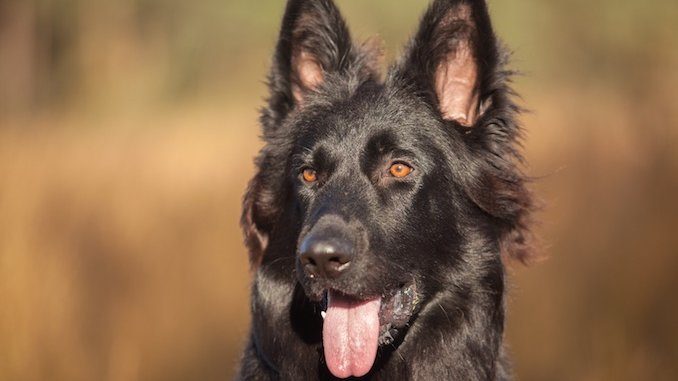
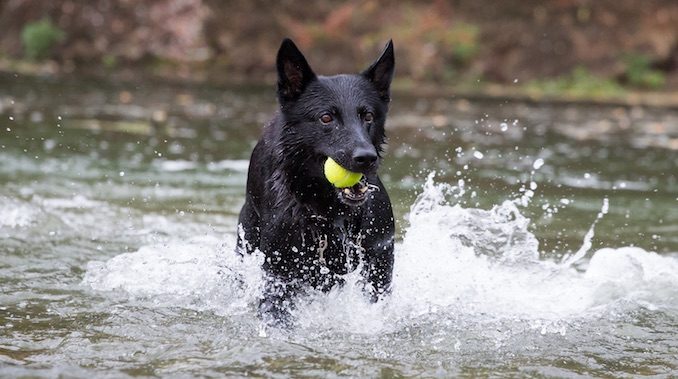
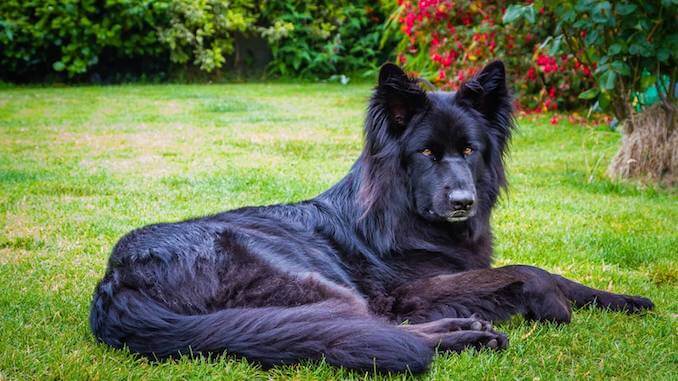
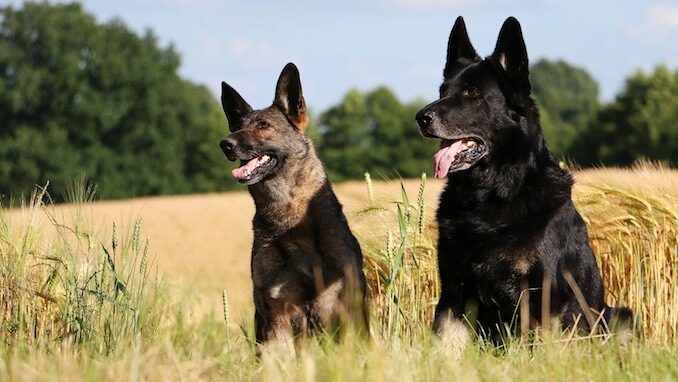
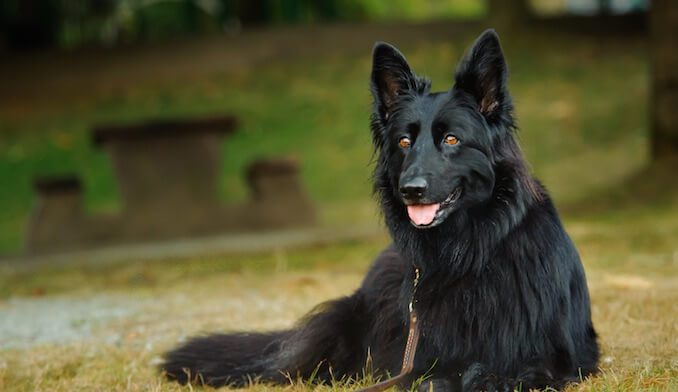
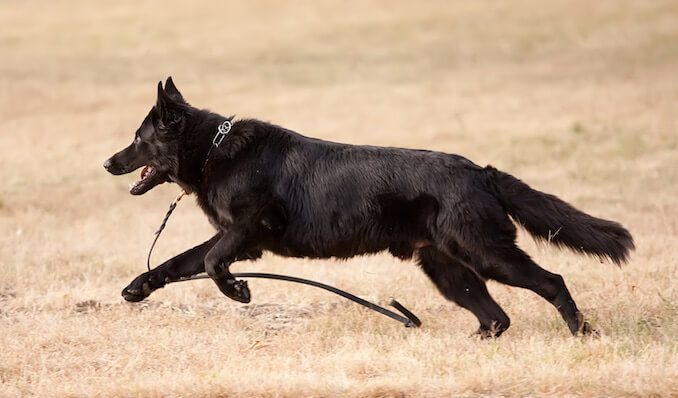
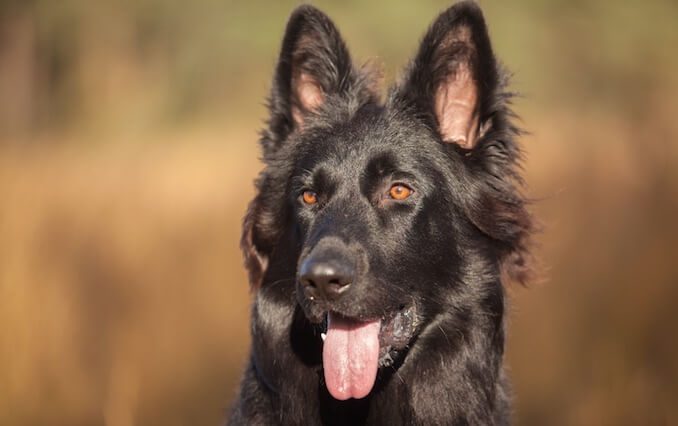
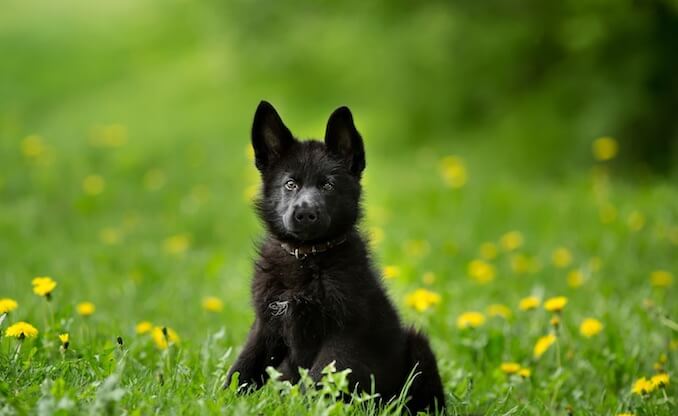

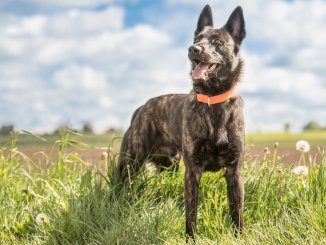
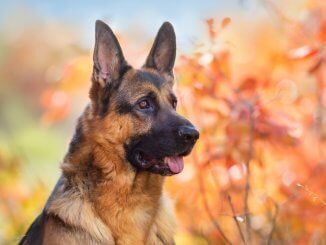

Great article, I have a black GSD…
She is wonderful dog and very smart. She loves
Learning new tasks. She just turned 2years. We
Love her so much we went and both another one
We are so glad because it keeps her very busy.
Hi Kay,
I have had GSD my whole life. Would love to find a reputable breeder of the black GSD. Can you tell me the name/location of the breeder you used?
Research the german shepard man he has a website as well as training videos on you tube, he breeds black GSD and he is a great knowledgeable Breeder. Hope this helps!
There are a few in Michigan I just got my first all black in February
We just got a black GSD from a breeder who is also a family friend. She only has a couple litters a year and takes care to breed dogs that have a great temperament. She also works with the dogs before they go home with things like socialization and some basic commands. She has a page on Facebook called Haus Hagen Kennels and is located in Wisconsin. Can’t recommend her enough!
This article helps a lot. I have, what I think, is a black GSD puppy. He is extremely active, which now I know why, He has this little tiny white strips of fur on his chest and is about 10 weeks old. His ears are still not up, this confuses me if he is indeed a GSD. How can you tell if he is a pure GSD breed?
My little guy took some time for his ears to stand up. Gently massaging the ears promotes more blood flow (or so I’ve been led to believe). I did this with my boy Rommel and his ears one at a time stood up. Cutest thing to see them with one floppy ear and one erect. White tuft of fur on chest with my two Black GSD’s.
We adopted our male long hair in 2012..approximately 2 years old..absolutely love him..big easy going guy.
The German shepherd dog is the best breed, so versital and beautiful
Interesting article! I have an 11 year old Black Shepard, who’s retired from the Marine Corps. She doesn’t sniff for bombs anymore, but she’s my baby and I love her!
Highly recommend to anyone who loves dogs and is looking for a true companion, more than a “pet”…. They can give more to you, than you can to them!
Our beautiful black GSD O’B died last year at 10.5 years. He was stunningly beautiful, wonderful temperament, made friends wherever he went–human and dog alike. We miss him terribly. Best dog I have ever known.
I am interested in adopting a male or female pure black German Sheppard. I would like your help me connecting me with a good breeder.
Hi Michelle, our editorial team is currently collecting a list of reputable breeders with the aim of publishing a list in the future. If you subscriber via email, once the list is ready you will receive an email with the breeder details.
This was a very informative article. That sounds great thanks!
Im looking for black german shepherd breeder.please send me a list of breeders in nj when available.
Hi Andy, our team at All Things Dogs is currently collecting a list of known breeders for GSDs, this includes black GSDs too. We will be in touch once the list is ready.
Can I subscribe for this list too? I’m not from the USA so information about Europe will be much appreciated. Nevertheless, I’m importing a car from the USA so it is not a big deal getting the puppy on the way 🙂
Very good article, love my black female!
I would like to receive more on GSD.
Thank you
Rashid